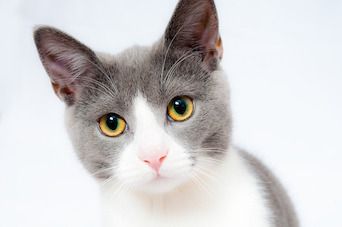Cerebrospinal Fluid Antibody Titers Could Help Diagnose FIP
Measuring titers of anti-feline coronavirus antibodies in cerebrospinal fluid could be a useful diagnostic method for feline infectious peritonitis.

Feline infectious peritonitis (FIP) affects domestic and wild cats and is caused by the virulent mutant form of enteric feline coronavirus (FCoV). Initial FCoV exposure typically results in only mild gastrointestinal or upper respiratory signs. Weeks or even years after initial exposure, though, FCoV can become virulent and cause feline infectious peritonitis (FIP). Cats with FIP exhibit a worsening of nonspecific clinical signs (anorexia, depression, fever) and ultimately can succumb to the disease.
A Japanese research team has reported that measuring titers of anti-FCoV antibodies in cerebrospinal fluid (CSF) could help diagnose FIP.
FIP has 2 clinical forms—effusive and noneffusive—and is difficult to diagnose. In recent years, imaging modalities such as computed tomography and magnetic resonance imaging have been used to diagnose neurologic FIP, which is a form of non-effusive FIP. Anti-FCoV antibody detection in CSF has also demonstrated diagnostic usefulness. However, although anti-FCoV titers have been reported, “no diagnostic index of FIP has been proposed,” wrote the researchers.
RELATED:
- Clinical Trial Shows Promise for FIP Treatment
- Treatment for Feline Infectious Peritonitis on the Horizon?
Antibody Detection and Measurement
The researchers collected CSF and serum samples from 271 cats with neurologic signs and suspected FIP; the cats had previously undergone imaging studies. Antibody titers were determined using indirect immunofluorescence.
Of the 271 cats, 28 tested positive for CSF anti-FCoV antibodies, as indicated by a titer of at least 1:10. For further analysis, these 28 cats were grouped according to titer range:
- Group A (n=15): 1:10 to 1:80
- Group B (n=13): 1:640 to 1:10,240
No cats had titers of 1:160 or 1:320.
To determine the serum to CSF (S/C) antibody ratio, the researchers took the reciprocal of each titer. The S/C ratio of group B (0.5 to 8) was markedly low, potentially due to a breakdown of the blood-brain barrier and massive influx of blood into the CSF.
Previous studies have reported that FCoV RNA detection in CSF strongly indicates FIP. Therefore, the researchers performed reverse transcriptase PCR on 13 group A and 11 group B CSF samples. In Group A, 2 of 13 samples tested positive for FCoV RNA; both samples had very low titers (1:10 and 1:20), suggesting early-stage neurologic FIP. Importantly, this finding indicates that FIP should not be ruled out even if CSF anti-FCoV antibody titers are low, the researchers noted. All 11 samples from Group B were positive for FCoV RNA.
Based on the study’s findings, the researchers concluded that a CSF anti-FCoV antibody titer of 1:640 or higher can be used to diagnose FIP. Using an antibody test would be much less expensive and require less skill than using genetic diagnostic tools. However, because 2 samples with very low titers tested positive for FCoV RNA, the researchers cautioned that the antibody test could have low predictive value for diagnosing FIP.
Looking Forward
Because the researchers were not able to obtain additional information on the study cats, such as clinical signs and examination findings, they proposed including epidemiologic data in future FIP studies to enable a more complete assessment of the diagnostic usefulness of anti-FCoV antibody testing for FIP.
Also, given the low S/C antibody ratio in the cats with high titers, the researchers suggested using this ratio as a diagnostic tool for other viral infections.
Dr. Pendergrass received her Doctor of Veterinary Medicine degree from the Virginia-Maryland College of Veterinary Medicine. Following veterinary school, she completed a postdoctoral fellowship at Emory University’s Yerkes National Primate Research Center. Dr. Pendergrass is the founder and owner of JPen Communications, a medical communications company.